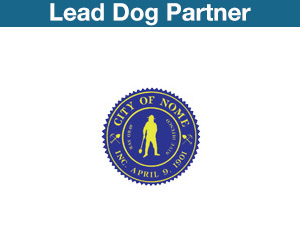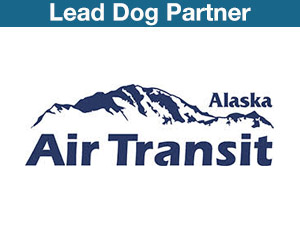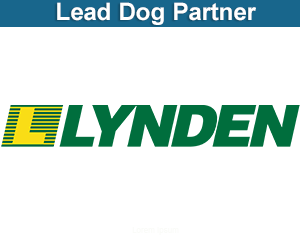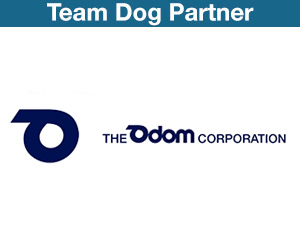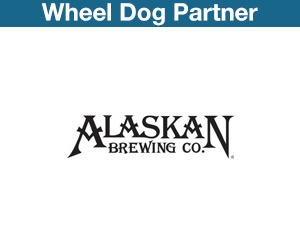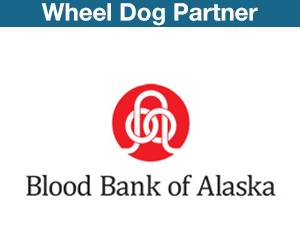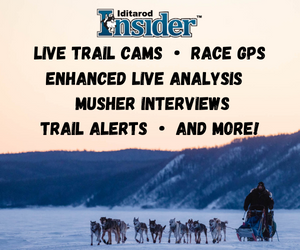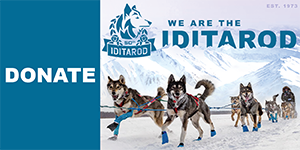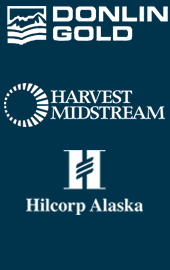by Donald Bowers, Jr.
Quick Overview
This is now the longest leg of the entire race on either the northern or southern routes. The new distance is approximately 105 miles for the 2000 race. It will probably not run less than the posted mileage and will seem to take forever. It will now be necessary for most teams to camp for several hours along this leg. The trail generally runs along the Innoko River, crossing it three times. It then runs northeast away from the river, crosses the North Fork of the Innoko, and then runs along ridges on the east side of Poorman Creek. The terrain is mostly wooded with some open stretches in the river valleys. Expect 12 to 18 hours for this run. The trail has some rolling hills in the section between the North Fork of the Innoko and the Poorman airstrip. There are no unusually tricky sections and most of the run can be a fairly fast trail if conditions are right and the fast-moving Iron Dog snowmachines haven’t bumped up the trail as they did in 1998.
The trail runs west from the checkpoint past the old townsite and along the runway, crossing the river twice in the first six miles. The river then makes a sharp bend to the north and the trail runs along the west side of the valley until about 31 miles out of Ophir, then crosses to the east side. The site of the old Cripple checkpoint is about 20 miles past this crossing, where the trail comes within about 50 yards of the Innoko River. From the old checkpoint site, the trail runs north along the east side of the Innoko River valley for about 5 miles, then cuts northeast along the flank of a series of low wooded ridges for about 30 miles to the North Fork of the Innoko. Then the trail follows the valley of Poorman Creek north for another 10 to 15 miles to the Poorman airstrip, near the old ghost town of Poorman Scattered overflow is common all along the leg, as are short glaciered and drifted sections.
It’s a safe bet you won’t have the faintest idea where you are for much this leg. Even if you sneak a GPS along with you it won’t help much because every hill and creek seems the same as the one before and the one ahead. There are a few recognizable river and creek crossings, but precious few hills and prominent landmarks. At night you will be collapsed into your own little world and the trail will seem to go forever. At least much of it is along an old cat trail, so there’s not much chance to get lost.
The trail will generally be well-marked and well-traveled on this stretch, since the Iron Dog snowmachine race uses the same trail on its way from Anchorage to Nome two weeks before the Iditarod. If past years have been any indication, a hundred or more fast-moving Iron Doggers will have thoroughly pounded the trail in many places.
This featurette is from the 2008 Iditarod Documentary. To purchase the full documentary, click here.
Detailed Description
From the checkpoint, you’ll continue along the old road for a mile to the old village site. Just before the old townsite, you’ll make a sharp right at an old mine, followed a few hundred yards later by a hard left onto the old airport runway (the airport dates back to the 1920s). (If you don’t make the turn onto the runway, you’ll quickly enter the old townsite on the river.)
About a mile and a half after you leave the west end of the runway you’ll make the first of three crossings of the Innoko River. In most years when the river freezes normally there isn’t much problem with these crossings. Once in awhile, however, a late-winter thaw can change everything in a hurry. You’ll know well ahead of time if there are problems on this stretch.
The trail at this point will run through woods and willows, crossing the river again six miles out of the checkpoint. In odd years the trail to Iditarod will split south immediately after crossing the river. You’ll turn north to parallel the Innoko and begin to run down the west side of a well-defined valley about two miles wide. The trail may run near the river or back up in the trees or tundra, depending on conditions. It normally doesn’t offer many surprises, although minor overflow and glaciering from side creeks is always a possibility.
In 1997 a massive million-acre forest fire scorched the Innoko region. You’ll get into the burn area once you’re northbound along the west side of the Innoko River. The fire came from the west, crossed the hills and even got to the east side of the Innoko. There will be burned areas ranging from patchy to extensive all the way to the checkpoint. Unlike the Farewell Burn for the first few years after the 1978 Bear Creek Fire that created it, the trail through the Innoko Burn is clear of fallen logs. Also unlike the Farewell Burn, the Innoko Burn didn’t destroy everything in this area and there are still many dead standing trees.
The third river crossing is about 25 miles past the second. The trail will continue down the east side for about another 20 miles through patchy burned areas to the site of the old checkpoint. The trail will generally stay far enough east of the Innoko (a mile or two) to remain in a more sparsely forested area. About five miles before the old checkpoint site you’ll cross Folger Creek, a major stream flowing in from the east. This will involve some twisting and turning through the bottomlands and cottonwoods until you finally cross the creek and get back up in the easier going. The big timber along Folger Creek has some decent camping places and is almost halfway to the new checkpoint location at Poorman.
As you continue down the river northbound, you will stay well east of the river itself, often on the more open areas nearer the foot of the hills. You’ll see the ridge on the west side of the river gradually get lower and lower. The old checkpoint site is abeam the end of the ridgeline, where it tapers off into the lowlands of the Innoko. In most previous years the checkpoint has been right on the river, where the trail comes almost up to the bank, at a place where skiplanes can land on a big looping bend. The name Cripple comes from an old steamboat landing farther down the river.
The old checkpoint was strictly a fly-in affair, with a couple of big tents and places in the straggly spruce and willow to park the dogs. Nothing will be there for the 2000 race, and you may not even notice where it is unless you see the river to your left. However, this may be a good place to camp, since you’re not going to push your dogs all the way to the Poorman airstrip without a major rest.
From the old checkpoint site on the main stem of the Innoko to the North Fork of the Innoko (the next major landmark) is about 35 miles of endless relatively easy ups and downs and occasional creek crossings. Immediately on leaving the old checkpoint site, you will dip down to cross a small creek and then the trail will begin to angle away from the river. You will begin to see a ridge stretching away from
the river to the northeast, which the trail will eventually follow.
Within a few miles after leaving the river, the trail skirts the foot of the hills to the east and then crosses Colorado Creek, a major stream flowing from the southeast, about 8 miles out of the old checkpoint site. This will probably be your last easily recognizable landmark for awhile. You’ve got about 40 miles and change to the new checkpoint site. Within another mile or so you will cross Hunch Creek and then run along the north side of the creek, climbing slowly along the flank of the northeast-trending ridge on the north side of the creek. The creek will sometimes be very close off the right side of the trail..
By now you’re heading steadily northeast. There will probably be small spots of overflow and glaciering all along the trail, especially where the trail runs sidehill or crosses smaller creeks. After 15 miles or so you’ll pass Hunch Mountain on the left (actually a hill) and cross a relatively open basin area for several miles. At the far side of the basin you’ll climb a bit and then drop slowly into the drainage of the North Fork of the Innoko, following the south side of the valley of one of its smaller tributaries.
The North Fork of the Innoko should be fairly easy to recognize. It’s a good-sized river and you’ll get into some big timber (including big cottonwoods) down in the river bottoms. There are some decent places to camp in the bottoms, but you’re less than 25 miles from the new checkpoint. On the north side of the North Fork you’ll cross a few miles of open bottomlands before working your way back up onto the ridges, generally paralleling Poorman Creek, which will be in the valley on your west. You’ll be running through hilly, mostly wooded country.
About 20 miles after the North Fork you will begin to enter the old Poorman mining area, marked by tailing piles along the trail. Throughout this area you may also find open pits and wide drainage ditches, some as much as 20 feet deep; sometimes the trail will plunge abruptly into one of these with little warning. There may also be some relatively narrow sections in old second-growth willow brush, and even an occasional right-angle turn.
Eventually the trail will pull up onto an old runway (still used in the summer) lined with vintage buildings and old trucks and bulldozers. The new checkpoint will be located here. It is not known whether the race will be able to use any of the old buildings, but there will certainly be tents and the inevitable Dodge Lodge. You will have to melt snow for water, but your dogs will definitely appreciate the rest. Give them plenty of time to recover, because the next leg up to Ruby is still a very long one and has plenty of hills.







